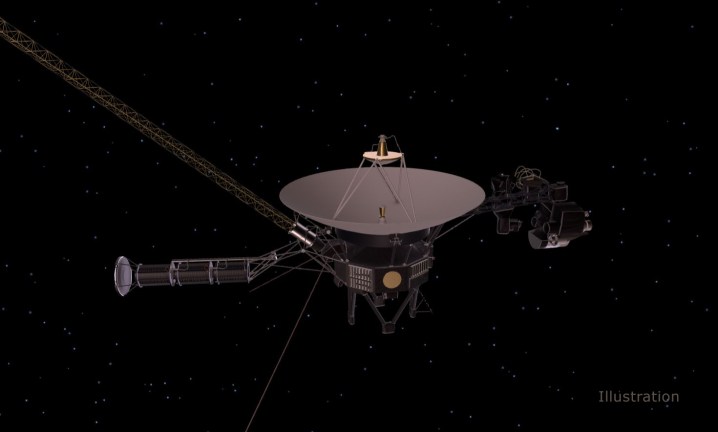Engineers have fixed an issue with the Voyager 1 probe, one of the two most distant manmade objects in the universe. A strange issue affecting the Voyager 1 spacecraft’s control system was first announced in May, and though the glitch is now fixed the underlying cause of the issue remains a mystery.
Two Voyager probes named Voyager 1 and Voyager 2 were launched in the 1970s, and have since traveled through the solar system and out into interstellar space, where they continue to send back data. It’s not surprising that the 40-year-old hardware is developing issues, though the recent problem was a puzzling one. Voyager 1’s attitude articulation and control system (AACS), which is responsible for keeping the probe’s antenna pointed correctly toward Earth, was sending back strange and impossible readings. However, the craft still appeared to be healthy and continuing on its journey as expected, and was able to send data correctly.

Engineers who examined the problem recently announced they had found what was causing the glitch. The AACS was sending its data via the wrong computer, using one which has not been used for many years instead of the functioning computer. This old computer was responsible for the garbled data.
To fix the issue, the team sent commands to set the AACS to send its data via the correct computer, and that corrected the problem. However, they still aren’t sure what caused the AACS to switch to the wrong computer in the first place, so they will keep working to identify the underlying problem. It could be that there is a fault in another of the onboard computers which caused the AACS to make the switch.
“We’re happy to have the telemetry back,” said Suzanne Dodd, Voyager’s project manager, in a statement. “We’ll do a full memory readout of the AACS and look at everything it’s been doing. That will help us try to diagnose the problem that caused the telemetry issue in the first place. So we’re cautiously optimistic, but we still have more investigating to do.”



